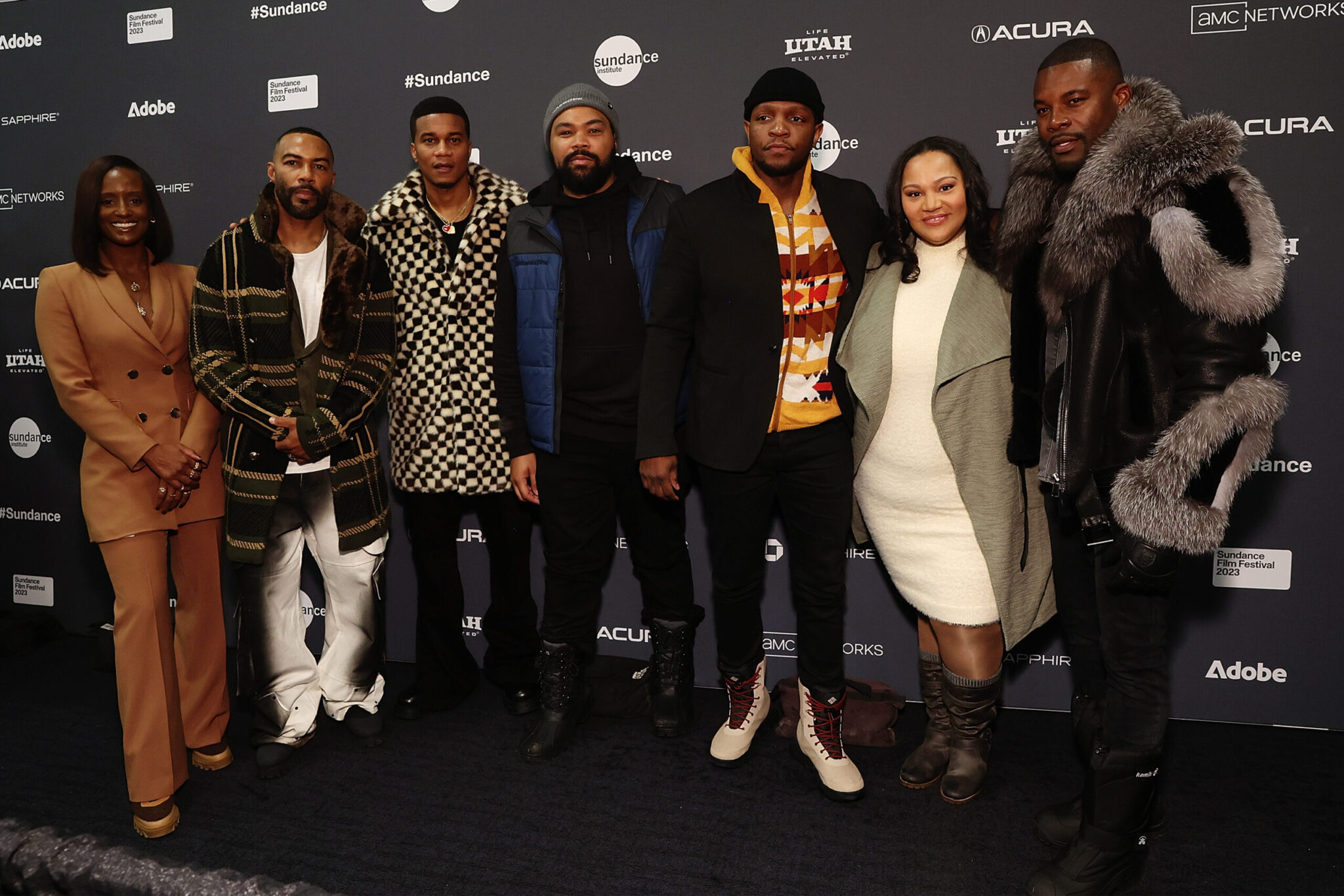PARK CITY, UTAH – JANUARY 20: Skye P. Marshall, Omari Hardwick, Cory Hardrict, Qasim Basir, Dana Gourrier and Amin Joseph attend the 2023 Sundance Film Festival “To Live and Die and Live” Premiere at The Ray Theatre on January 20, 2023 in Park City, Utah. (Photo by Robin Marchant/Getty Images)
By Aliese Muhonen
You’ve likely heard the proverb “it takes a village to raise a child.” For writer-director-producer Qasim Basir, it took a village to make a movie. The village was the city of Detroit, and the result is To Live and Die and Live, Basir’s latest drama that premiered in the NEXT category of the 2023 Sundance Film Festival on January 20.
Filmed throughout Detroit, the story follows hotshot Hollywood director Muhammad (Amin Joseph) as he returns to the city to bury his stepfather and settle outstanding business accounts. But the grief that Muhammad masks with denial and escalating addiction threatens to end his efforts.
To Live and Die and Live is Basir’s second film to premiere at the Festival, after his romance A Boy. A Girl. A Dream. screened in 2018. But this story hits closer to home for Basir in a number of ways. Like Muhammad, Basir is a Detroit native with a Muslim upbringing, and in a packed live Q&A following the premiere, he confirms that Muhammad’s loss was directly inspired by his own.
“I wrote this originally to honor my stepfather, my late stepfather, Shahad, and he passed five years ago,” Basir says, wiping his eyes. More losses followed: Two years later, a beloved uncle; five months ago his biological father; and six weeks later another uncle. The film is dedicated to them in the credits. “They’re the men that shaped me my whole life.”
When he thought about making the film, Basir considered the fact that so many people — everyone he could think of — had lost someone in the past few years, whether from the pandemic or otherwise.
“And so, when it came to making this, it was like, ‘All right, let’s talk about [loss]. We have trouble dealing with it,’” he says. “Muhammad is a character that really struggles with it. And I’m not mad at him. I’m not mad at anyone that tries to find something to escape because it gets hard sometimes.”
While it’s a moving examination of the loss of a parent and the tribulations of addiction, the film is also a love letter to Detroit and the healing power of community.
Basir exhausted his local connections to produce the film. Many of his friends, family members, and collaborators acted in roles and assisted throughout the production (and many of them are also present at the Q&A). One of the most surprising players (and a literal character on the call sheet) is Detroit, which looks strikingly different from past depictions thanks to Basir’s vision and cinematography.
When he returned to the city during the COVID-19 pandemic, Basir noticed how it was being rebuilt. Depicting Detroit’s renewal became one of Basir’s objectives during filming, and a collective dream for the film’s characters. “Most media we see [of Detroit] usually highlights the blight, the decay,” Basir says in a “Meet the Artist” video interview with Sundance. “So I’m like, ‘What if we shot something here that was beautiful?’”
The Detroit of the film is awash in kaleidoscopic color, featuring blooming landscapes and vibrant architecture captured during the summer 2021 shoot. But the artistry lies in more than pretty pictures (which are abundant throughout). Basir’s use of creative filming techniques like nontraditional rack focus and oblique angles illuminate the characters’ moods, and in Muhammad’s case, his mental state and inebriation.
The need for and strength of community and connections — whether friends or family — is another aspect of the film’s beauty. Muhammad is alienated by choice for most of the film, refusing to open up to anyone until he’s in dire straits and avoiding telling anyone he cares about them.
Actor Omari Hardwick, whose character Kevin is an associate of Muhammad’s late stepfather, recalls the cast adding off-script gestures into their performances to confront the greater issue of toxic masculinity. At one point, Kevin unexpectedly embraces Muhammad, who clearly needs it.
“Amin and I tried to just dial in and go, ‘So what’s missing?’ And then we thought … specifically amongst the Black community, namely Black men, what’s missing is the unabashed, unapologetic affection for each other,” Hardwick says, triggering murmurs of agreement in the audience. “So we decided to just bring that. It was cool that Qasim left us that space. What is not enough of a character on the call sheet of life is men being brazen, emboldened enough and just courageous enough to love on each other. It’s kind of whacked that it doesn’t exist.”
Though To Live and Die and Live has been the most difficult and tiring production Basir has undertaken yet — he and his wife welcomed their second child during filming — he’s glad to have made such a personal project.
“The pandemic brought me home [to Detroit], back to where it all began for me: filmmaking,” Basir continues in the “Meet the Artist” interview. “That reminder and everything that followed led to the making of my new film. This film was a callback to the roots of my craft.”







